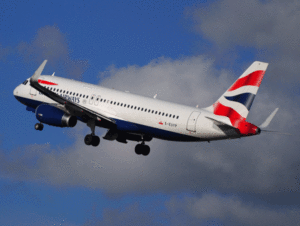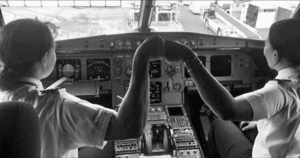Cleared for Take-off: Social Media Lessons from the Airline Industry
Published on February 9, 2018, at 11:05 a.m.
by Halle Russo.
If an airline makes news headlines, chances are high that a crisis looms in the distance like dark clouds at 35,000 feet. In the past year, a passenger was forced off of an airplane, a family was almost arrested over a seating disagreement, and the world’s busiest airport lost power.
These events were followed by a plethora of reactions on social media as customers took to their keyboards to voice their opinions. While social media is critical when crisis strikes, it is an even more powerful tool for customer service and brand management.
Although each airline’s strategy varies, there are three key lessons that any PR practitioner can learn from the airline industry’s use of social media.
Disseminate quick, unique and sincere responses.
In a Forbes article Carmine Gallo noted, “[B]rands that are responsive on social media are also the ones that win awards for customer service.”

Prompt response time is essential to customer satisfaction. Instead of calling the customer service department to resolve an issue, individuals often post directly to an airline’s Facebook or Twitter page. This interaction shows others how quickly the company resolves issues and reveals how much it values its customers.
Justin Bachman’s article “These Airlines Fear Your Twitter Rampage the Most” shares the results of a survey on social media response time. In the survey, eight of 10 popular North American airlines had an average response time of 20 minutes or less. JetBlue had the fastest time of all North American airlines at 4 minutes and 50 seconds.
Not only should responses be fast, but they should also be sincere. The quickest way to make customers feel as if they do not matter is to address their concerns with an unemotional blanket statement. Airlines stand out when they address each individual’s issue with a genuine, unique response.
Develop and maintain a strong, consistent voice.
Social media is arguably more crucial to brand management in the airline industry than a website or the in-flight experience. According to a 2015 Gallup poll, the average American only flies two times each year. This statistic means that social media is one of the only channels where airlines can consistently reach the consumer.

The airline industry takes advantage of social media by exemplifying what it means to humanize a brand. Each airline’s voice is distinct and illuminates the company’s culture and values. Delta maintains its sophisticated image through video content, such as its recent “Behind the Climb” campaign. Southwest Airlines spreads its “servant’s heart” and shares its LUV with stories of customers, such as Susan and James who recently tied the knot in an airport.
Embrace the distinct benefits of each platform.
Every social media platform offers unique features, which challenge companies to tailor their strategy specifically to that platform. For instance, Twitter may be best for interacting with customers, but Instagram is a good way to entice daydreamers with travel photos.
According to AdWeek’s article “The Key to Social Success for Airlines: Be More Human,” Delta had the most interactions on Facebook of 14 airlines in the first quarter of 2017. This is likely a result of
Delta’s feature stories on employees during Women’s History Month or Black History Month. Delta shared a picture of two female pilots in the cockpit on Facebook last March, but did not share the exact same content on Instagram. This variety keeps customers engaged across every platform.

Although brand strategy and voice will always differ, the airline industry consistently reinforces the importance of engaging with consumers, humanizing a brand and using the strengths of each social media platform. The sky’s the limit, but brands that don’t embrace social media will remain stuck on the tarmac.




